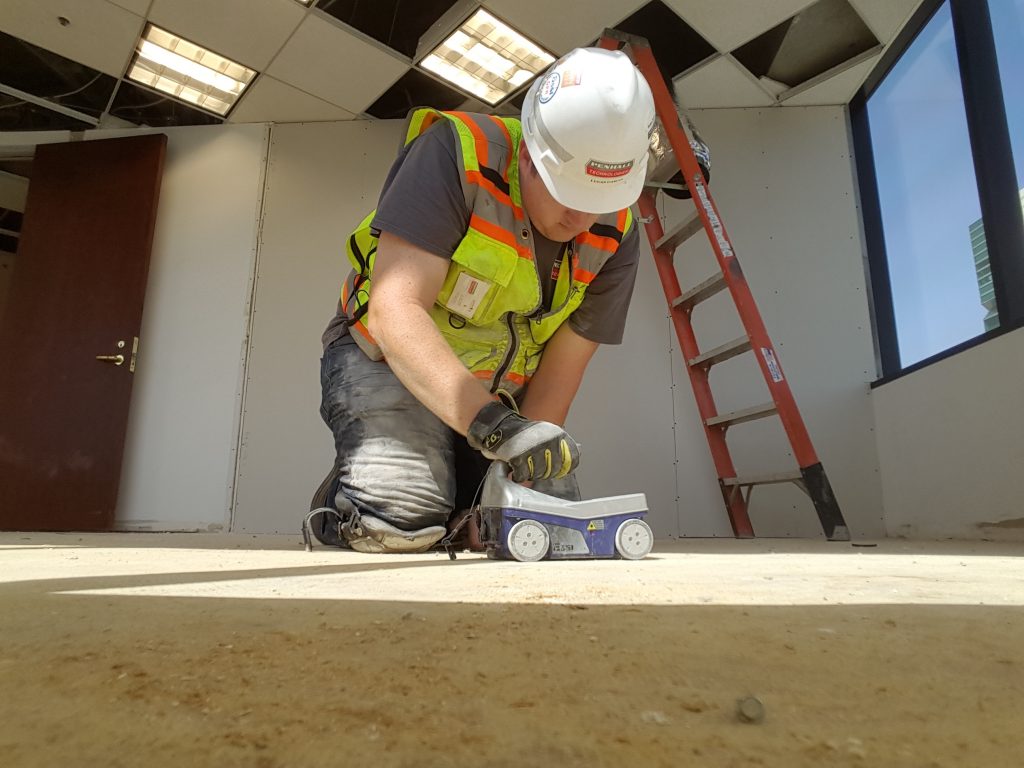Precision and Accuracy in Concrete Scanning Solutions
Precision and Accuracy in Concrete Scanning Solutions
Blog Article
Introduce the Transformative Power of Concrete Scanning in Maximizing Efficiency and Safety
Concrete scanning has actually arised as a vital tool in the building and construction market, supplying unequaled benefits in boosting task efficiency and guaranteeing safety criteria. The transformative power of concrete scanning exists in its ability to supply comprehensive insights and real-time data, revolutionizing exactly how jobs are prepared and implemented.
Significance of Concrete Scanning
Making sure the structural integrity and safety of building projects starts with the vital action of carrying out comprehensive concrete scanning. Concrete scanning is a non-destructive approach utilized to find and map subsurface elements within concrete frameworks. This process is vital in recognizing possible dangers, such as rebar, post-tension cables, and avenues, that may be concealed within the concrete. By making use of innovative innovations like ground-penetrating radar (GPR) and electromagnetic induction, building and construction teams can accurately situate these elements without triggering any damage to the structure.
Furthermore, concrete scanning helps in maximizing task timelines and budget plan by staying clear of unforeseen expenses and delays that may arise due to unforeseen blockages within the concrete. Inevitably, investing in complete concrete scanning is an aggressive technique that enhances both performance and safety and security in building and construction jobs.
How Concrete Scanning Functions
Concrete scanning runs as a crucial tool in building and construction jobs by employing innovative modern technologies to discover and map subsurface elements without creating structural damage. Ground Passing Through Radar (GPR) and Electromagnetic Induction (EMI) are two key techniques used in concrete scanning. GPR works by discharging high-frequency radar pulses into the surface area, which bounce back when they encounter subsurface items or voids. The moment considered the signal to return suggests the depth and area of the objects. EMI, on the various other hand, makes use of magnetic fields to determine variances in material compositions, such as identifying rebar or channels within concrete frameworks.
Throughout the scanning process, the data collected is analyzed in real-time, enabling immediate identification of prospective risks or obstacles beneath the surface. This information help in decision-making, making sure that construction tasks proceed securely and effectively. In addition, 3D imaging software application can be used to produce detailed maps of the subsurface elements, even more boosting project preparation and execution. By utilizing these sophisticated modern technologies, concrete scanning considerably decreases the danger of costly damages and injuries on building sites.
Benefits of Concrete Scanning
One of the key benefits of concrete scanning is the capability to discover and situate embedded things such as rebar, post-tension cables, and channels precisely. Concrete scanning assists in preparation and developing much more efficiently, as it supplies specific information concerning the location and depth of architectural elements.

Instance Researches: Concrete Scanning Success

In an additional case, a construction business go now used 3D concrete scanning to evaluate the problem old concrete frameworks in a historical structure. The thorough scans offered beneficial understandings right into the extent of wear and tear and helped prioritize maintenance efforts properly. By proactively resolving locations of concern recognized via scanning, the firm was able to prolong the life-span of the structure and guarantee resident security.
These case research studies emphasize the transformative power of concrete scanning in improving performance, precision, and security in building tasks.
Executing Concrete Scanning in Projects
Carrying out innovative scanning innovations during building and construction tasks has actually become significantly important for boosting accuracy and safety and security. By integrating concrete scanning right into task planning and implementation, building and construction teams can determine prospective dangers, such as click this site rebar or post-tension cords, hidden within concrete frameworks. This aggressive method minimizes the danger of crashes, delays, and costly rework, inevitably bring about extra effective job timelines and spending plans.
To execute concrete scanning properly, task supervisors ought to collaborate closely with knowledgeable scanning experts to determine one of the most suitable scanning techniques for the specific project demands. Involving scanning professionals from the very early stages of a job makes it possible for the group to create comprehensive scanning strategies that address vital areas of issue and make sure complete data collection.
Furthermore, incorporating concrete scanning into routine task workflows can improve decision-making processes, as real-time scan data supplies instant insights into the condition of concrete structures - Concrete Scanning. This data-driven technique assists in notified problem-solving and makes it possible for groups to make changes without delay, promoting a society of performance and security throughout the project lifecycle

Conclusion
In verdict, concrete scanning plays a crucial duty in enhancing efficiency and safety in construction projects. By using sophisticated modern technology to find and map out underlying structures within concrete, this procedure assists to avoid pricey mistakes, guarantee architectural stability, and useful content decrease dangers on website. With the capability to reveal concealed components and offer accurate data, concrete scanning verifies to be a beneficial device for enhancing task outcomes and maximizing total success.
Concrete scanning is a non-destructive approach used to identify and map subsurface elements within concrete structures. Additionally, concrete scanning helps in optimizing job timelines and spending plan by staying clear of unexpected expenses and delays that might occur due to unpredicted obstructions within the concrete. One noteworthy situation study involves a massive improvement project where concrete scanning played an important duty in guaranteeing project success.In another instance, a construction business made use of 3D concrete scanning to assess the problem of aging concrete frameworks in a historical structure. By integrating concrete scanning into job preparation and implementation, construction groups can determine possible dangers, such as rebar or post-tension cable televisions, concealed within concrete frameworks.
Report this page